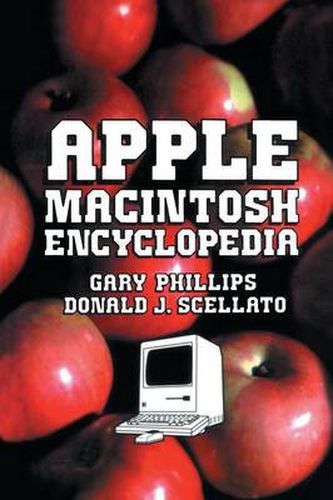Readings Newsletter
Become a Readings Member to make your shopping experience even easier.
Sign in or sign up for free!
You’re not far away from qualifying for FREE standard shipping within Australia
You’ve qualified for FREE standard shipping within Australia
The cart is loading…






This title is printed to order. This book may have been self-published. If so, we cannot guarantee the quality of the content. In the main most books will have gone through the editing process however some may not. We therefore suggest that you be aware of this before ordering this book. If in doubt check either the author or publisher’s details as we are unable to accept any returns unless they are faulty. Please contact us if you have any questions.
The Apple Macintosh Encyclopedia provides easily accessible, brief and understandable information on the topics that you are most likely to have questions about. We have carefully digested the manuals, books, magazine articles, and other information sources for the Macintosh. These, combined with our own experience in using the Macintosh and other personal computers, have been integrated into an alphabetical sequence of short entries in the style of an encyclopedia. The goal is to provide concise, useful and easy-to-understand information on a particular topic that is quickly accessible when you need it. Much of the information in the entries is not contained in the manuals provided with the Macintosh and various software products. For example, notice the discussion, under WIDTH, of the deferred nature of this command when used with a device name, the discussion of the colon (:) in Multiplan for ranges, or Saving, Problems With. These topics are omitted or inadequately covered in the standard manuals. The Macintosh is the first truly visual computer. In keeping with the highly visual nature of using the Macintosh, we have provided over 100 illustrations. Each shows exactly what you will see on the screen when exploring topics discussed in the text. The Macintosh Encyclopedia opens with a visual guide to icons, and remains highly visual in orientation throughout the text.
$9.00 standard shipping within Australia
FREE standard shipping within Australia for orders over $100.00
Express & International shipping calculated at checkout
This title is printed to order. This book may have been self-published. If so, we cannot guarantee the quality of the content. In the main most books will have gone through the editing process however some may not. We therefore suggest that you be aware of this before ordering this book. If in doubt check either the author or publisher’s details as we are unable to accept any returns unless they are faulty. Please contact us if you have any questions.
The Apple Macintosh Encyclopedia provides easily accessible, brief and understandable information on the topics that you are most likely to have questions about. We have carefully digested the manuals, books, magazine articles, and other information sources for the Macintosh. These, combined with our own experience in using the Macintosh and other personal computers, have been integrated into an alphabetical sequence of short entries in the style of an encyclopedia. The goal is to provide concise, useful and easy-to-understand information on a particular topic that is quickly accessible when you need it. Much of the information in the entries is not contained in the manuals provided with the Macintosh and various software products. For example, notice the discussion, under WIDTH, of the deferred nature of this command when used with a device name, the discussion of the colon (:) in Multiplan for ranges, or Saving, Problems With. These topics are omitted or inadequately covered in the standard manuals. The Macintosh is the first truly visual computer. In keeping with the highly visual nature of using the Macintosh, we have provided over 100 illustrations. Each shows exactly what you will see on the screen when exploring topics discussed in the text. The Macintosh Encyclopedia opens with a visual guide to icons, and remains highly visual in orientation throughout the text.